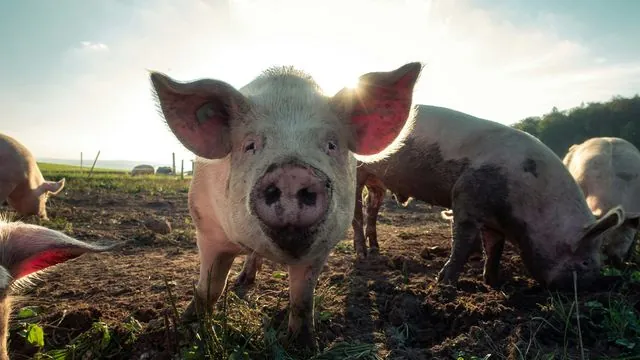
Shocking Discovery: Pigs May Be Key to Spreading Rat Hepatitis E Virus to Humans!
2024-09-26
New Research Findings
New research has unveiled alarming evidence that pigs could act as a transmission vehicle for a variant of the hepatitis E virus (HEV) found in rats, which has recently been identified as a potential threat to human health. Known as Rocahepevirus ratti, or "rat HEV," this strain primarily resides in rats, which have long been considered the main reservoir for the virus.
Recent Cases and Concerns
Since a puzzling case emerged in Hong Kong in 2018, where an individual with a weakened immune system contracted the virus, there have been at least 20 confirmed cases of rat HEV in humans, including instances involving individuals with healthy immune systems. What's particularly concerning is that many of these infected individuals reported no direct exposure to rats, leaving the origins of their infections shrouded in mystery. Previous research points to the consumption of raw or undercooked pork as a key risk factor for hepatitis E infections, thus raising suspicions about possible routes of transmission for rat HEV as well.
Groundbreaking Discovery at Ohio State University
A research team at The Ohio State University made a groundbreaking discovery: when a strain of rat HEV taken from human cases was introduced to pigs in controlled, farm-like settings, the virus successfully infected the pigs and spread between animals housed together. Given that swine barns often harbor rats as pests, these findings suggest that the pork production industry could be a crucial environment for the zoonotic transfer of rat HEV to humans.
The Urgency of Understanding Rat HEV
Scott Kenney, an associate professor at Ohio State and senior author of the study, emphasized the urgency of understanding the genetics of this virus. “We always want to know which viruses might be up and coming. In the unlikely event something happens in the United States that would enable rat HEV to expand, we need to be prepared,” he stated.
Global Threat of Hepatitis E
Published recently in *PNAS Nexus*, the study sheds light on the global threat of hepatitis E, which ranks as the leading cause of acute viral liver infections, particularly in areas with poor sanitation. Interestingly, while the virus is endemic among pigs in the U.S., it typically resides in the liver and is killed through proper cooking, rendering it less of a concern in most cases.
Revisiting Rat HEV as a Potential Human Pathogen
However, previous research indicated that some strains of rat HEV did not infect non-human primates, causing it to be overlooked for years as a potential human pathogen. “It dropped off the radar for six or seven years because it was thought not to be a human pathogen. And now it’s infecting humans, so we need to figure out why,” Kenney added.
Infectious Viral Clone Development
In a pivotal part of the study, lead author Kush Yadav developed an infectious viral clone of a strain associated with human disease, known as LCK-3110. After infecting pigs with LCK-3110 and observing their health, researchers noted that nearly all pigs showed no external signs of illness. However, the terrifying revelation came when the rat HEV was traced in the cerebrospinal fluid of infected pigs, hinting at a possible correlation between some HEV strains and neurological disorders in humans.
Implications for Public Health
Yadav highlighted the growing importance of the virus in relation to neurological issues: “HEV is gaining importance for neurological disorders, and a lot of the research now points toward how neuropathology is caused by the hepatitis E virus. Transplant recipients in the United States could therefore face heightened risks due to this emerging threat.”
Calls for Food Safety Measures
This urgent breakthrough calls for increased scrutiny of pork liver products and robust food safety measures to counteract the risk of rat HEV transmission, particularly for vulnerable populations. As the world grapples with ongoing health challenges, this outstanding research could inform crucial strategies to safeguard public health against an unseen enemy lurking in our food systems.

 Brasil (PT)
Brasil (PT)
 Canada (EN)
Canada (EN)
 Chile (ES)
Chile (ES)
 España (ES)
España (ES)
 France (FR)
France (FR)
 Hong Kong (EN)
Hong Kong (EN)
 Italia (IT)
Italia (IT)
 日本 (JA)
日本 (JA)
 Magyarország (HU)
Magyarország (HU)
 Norge (NO)
Norge (NO)
 Polska (PL)
Polska (PL)
 Schweiz (DE)
Schweiz (DE)
 Singapore (EN)
Singapore (EN)
 Sverige (SV)
Sverige (SV)
 Suomi (FI)
Suomi (FI)
 Türkiye (TR)
Türkiye (TR)